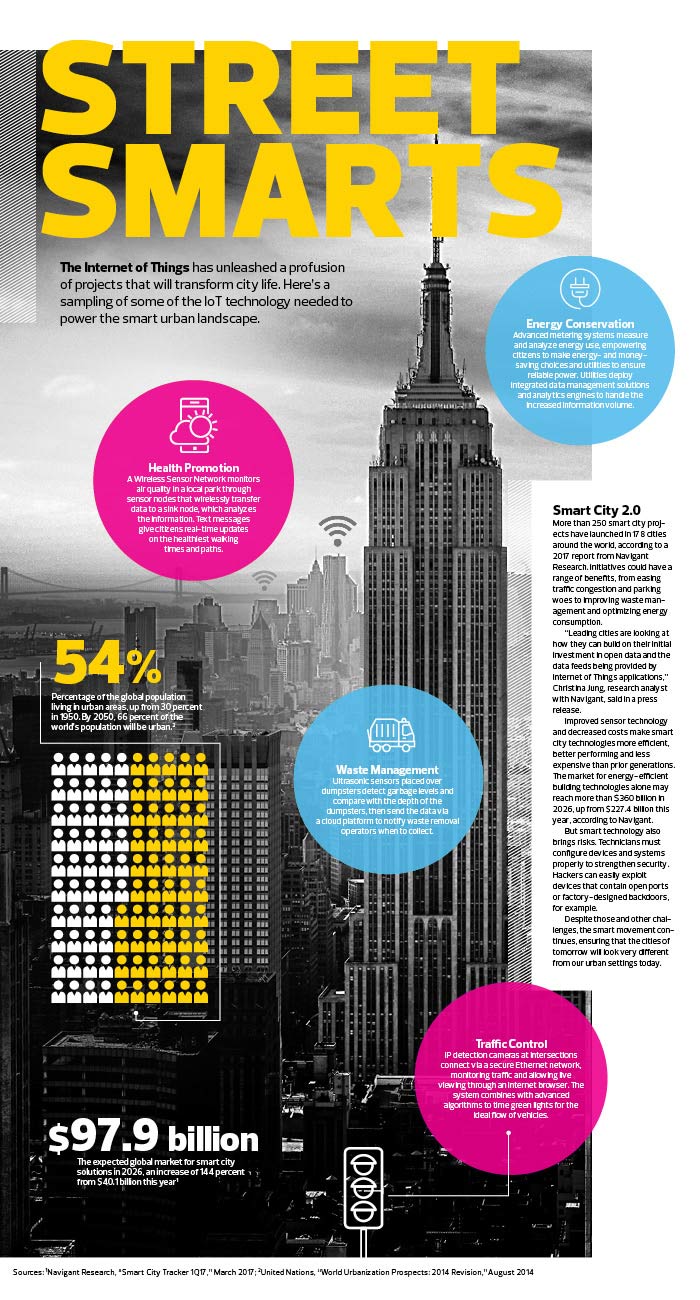How IoT Is Changing the Urban Landscape [#Infographic]
More than 250 smart city projects have launched in 178 cities around the world, according to a 2017 report from Navigant Research. The initiatives could have a range of benefits, from easing traffic congestion and parking woes to improving waste management and optimizing energy consumption.
“Leading cities are looking at how they can build on their initial investment in open data and the data feeds being provided by Internet of Things applications,” Christina Jung, research analyst with Navigant, said in a press release.
Improved sensor technology and decreased costs make smart city technologies more efficient, better performing and less expensive than prior generations.
The market for energy-efficient building technologies alone may reach more than $360 billion in 2026, up from $227.4 billion this year, according to Navigant.
But smart technology also brings risks. Technicians must configure devices and systems properly to strengthen security. Hackers can easily exploit devices that contain open ports or factory-designed backdoors, for example.
Despite those and other challenges, the smart movement continues, ensuring that the cities of tomorrow will look very different from our urban settings today.
Check out our infographic below for a look at how IoT is changing our cities.
SIGN UP: Get more news from the StateTech newsletter in your inbox every two weeks









